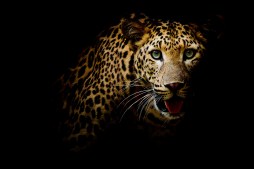The Evolution of Camouflage: How Animals Developed Their Blending Abilities
Camouflage is one of nature’s most fascinating adaptations, allowing animals to blend seamlessly into their surroundings. This evolutionary trait has helped countless species survive by evading predators or sneaking up on prey. In this article, we’ll explore the masters of camouflage in the animal kingdom and how they have developed these incredible blending abilities over time.
Understanding Camouflage in the Animal Kingdom
Camouflage refers to the methods animals use to conceal themselves within their environment. This can involve colors, patterns, shapes, and behaviors that enable them to avoid detection. Different types of camouflage include background matching, disruptive coloration, mimicry, and countershading. Each approach serves a specific purpose depending on the animal’s habitat and lifestyle.
The Evolutionary Drivers Behind Camouflage
Natural selection plays a crucial role in the development of camouflage. Animals better suited at hiding from predators or ambushing prey have higher survival rates and are more likely to pass on their genes. Over generations, these traits become more pronounced as species adapt to their environments. Factors such as habitat changes and predator-prey dynamics influence how camouflage evolves.
Remarkable Examples of Camouflage Masters
Many animals demonstrate extraordinary camouflage abilities. The leaf-tailed gecko mimics dead leaves so precisely that it becomes nearly invisible among forest debris. Arctic hares change their fur color seasonally from brown to white for blending with snow-covered landscapes. Cuttlefish can rapidly alter their skin color and texture for instant disguise underwater.
How Animals Achieve Their Blending Abilities
Animals employ various biological mechanisms for camouflage including pigmentation changes controlled by specialized cells called chromatophores or iridophores. Some species physically alter their body shape or posture to better match surroundings while others utilize behavioral tactics like remaining motionless or positioning themselves strategically against backgrounds.
The Importance of Studying Animal Camouflage Today
Understanding animal camouflage not only reveals insights into evolution but also inspires innovations in technology — for example, developing stealth materials or adaptive clothing based on natural principles of concealment. Additionally, knowledge about these adaptations aids conservation efforts by highlighting how habitat destruction might impact species reliant on specific environments for effective camouflage.
From subtle color shifts to astonishing mimicry feats, the evolution of camouflage showcases nature’s ingenuity in helping animals survive and thrive. By studying these masters of disguise closely, we gain a deeper appreciation for biodiversity and learn how adaptation shapes life on Earth.
This text was generated using a large language model, and select text has been reviewed and moderated for purposes such as readability.











